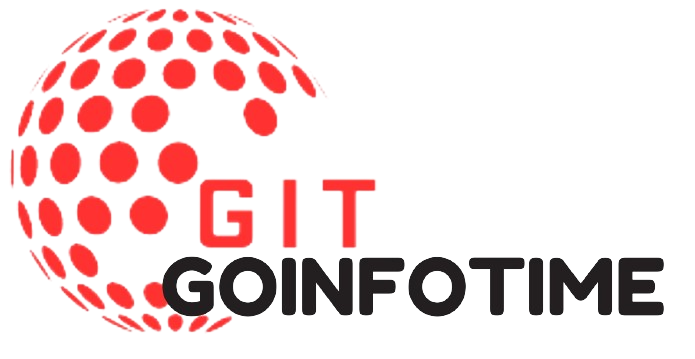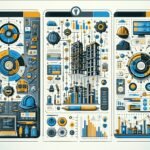Introduction
The range is a versatile term that appears in various contexts. It can refer to distance, variety, scope, or even a cooking appliance. In this article, we will explore the range in depth. We will discuss its meaning, uses, benefits, and much more. Our goal is to provide you with easy-to-read and informative content about the range.
What is The Range?
The range has several meanings depending on the context. Here are some common definitions:
- Geographical Range: Refers to the area over which something extends. For example, the geographical range of a species can indicate where it is found.
- Statistical Range: In statistics, the range refers to the difference between the highest and lowest values in a data set.
- Cooking Range: This is an appliance used for cooking. It often includes an oven and burners for stovetop cooking.
- Measurement Range: In science, the range can refer to the limits within which a measurement can be taken.
- Product Range: This refers to the variety of products offered by a company.
Types of The Range
1. Geographical Range
Geographical the range is significant in ecology. It helps scientists understand where different species live. This information is crucial for conservation efforts. For instance, if a species’ geographical the range is shrinking, it may be at risk of extinction.
2. Statistical Range
In statistics, the range is a simple measure of variability. It is calculated by subtracting the smallest value from the largest value in a dataset. This can help researchers quickly grasp the data’s spread. For example, if test scores range from 50 to 90, the statistical the range is 40.
3. Cooking Range
The cooking range is an essential appliance in most kitchens. It allows for baking, boiling, and frying. There are many types of cooking ranges, including gas, electric, and induction. Each type has its advantages. For instance, gas ranges provide instant heat control, while electric ranges are easier to clean.
4. Measurement Range
In science, the range of measurements is crucial. Instruments like thermometers and scales have specific measurement ranges. For example, a thermometer may have a range from -10 to 100 degrees Celsius. Knowing the measurement range ensures accurate readings.
5. Product Range
Businesses often focus on their product range to meet consumer needs. A diverse product range can attract more customers. For example, a clothing store might offer a range of styles, sizes, and colors. This variety can lead to increased sales and customer satisfaction.
The Importance of The Range
1. Understanding Diversity
One of the key benefits of studying the range is understanding diversity. This applies to biological species, statistical data, and even product offerings. Knowing the range allows us to appreciate the variety in our world.
2. Decision Making
In business, understanding the product range can lead to better decision-making. Companies can identify gaps in their offerings. This insight helps them innovate and improve their product line.
3. Conservation Efforts
In ecology, knowing the geographical range of species helps in conservation. Protecting habitats and understanding migration patterns are essential for preserving biodiversity. Efforts to conserve endangered species often start with mapping their geographical range.
4. Data Analysis
In statistics, understanding the range helps analyze data effectively. It provides a quick snapshot of data variability. This insight is valuable in fields like education, healthcare, and economics.
Challenges Related to The Range
1. Limited Understanding
Many people do not fully understand the range in its various contexts. This can lead to misconceptions. For instance, misunderstanding the statistical range can affect data interpretation.
2. Equipment Limitations
In science and cooking, limitations in measurement tools can affect accuracy. If an instrument’s range is not suitable for the intended measurement, it can lead to errors. It is crucial to choose the right tools for the job.
3. Market Saturation
In business, a saturated product range can confuse consumers. If there are too many similar products, customers may feel overwhelmed. Businesses must balance variety with clarity in their product offerings.
4. Environmental Changes
In ecology, environmental changes can alter the geographical range of species. Climate change, habitat loss, and pollution can force species to adapt or relocate. Monitoring these changes is essential for effective conservation.
5. Economic Factors
In business, economic conditions can impact the product range. During a recession, companies may reduce their offerings to cut costs. This can lead to less diversity in the market, affecting consumer choice.
How to Analyze The Range
1. Collecting Data
To analyze the range, the first step is to collect data. This could be in the form of measurements, survey responses, or sales figures. Ensuring accurate data collection is crucial for meaningful analysis.
2. Calculating Statistical Range
Once you have data, calculating the statistical range is straightforward. Subtract the smallest value from the largest value. This provides insight into the data’s variability.
3. Assessing Geographical Range
For ecological studies, researchers often map the geographical range of species. This may involve field studies and data collection from various locations. Mapping can reveal critical information about habitat use and conservation needs.
4. Evaluating Product Range
In business, evaluating the product range involves assessing customer needs and market trends. Surveys and focus groups can provide valuable feedback. Companies should regularly review their product offerings to ensure they meet consumer demands.
5. Using Tools and Software
Various tools and software can aid in analyzing the_range. Statistical software can help visualize data, while mapping tools can help plot geographical ranges. Utilizing technology can enhance the analysis process.
The Future of The Range
1. Advancements in Technology
As technology advances, the way we understand the_range will also change. New tools and methods will improve data collection and analysis. This will allow for better insights in both ecology and business.
2. Increased Awareness
With growing awareness of environmental issues, understanding geographical ranges will be more critical. Conservation efforts will rely on accurate data about species distribution. Public interest in sustainability will drive research in this area.
3. Data-Driven Decisions
In business, data-driven decision-making is becoming the norm. Companies will increasingly rely on data analysis to optimize their product ranges. This trend will lead to more personalized marketing and improved customer satisfaction.
4. Climate Change Impact
Climate change will significantly affect the geographical range of many species. Researchers will need to adapt their methods to account for these changes. Understanding how the_range shifts can inform conservation strategies.
5. Evolving Consumer Preferences
As consumer preferences evolve, businesses will need to adapt their product ranges. Trends like sustainability and ethical sourcing will influence what products are offered. Companies must stay ahead of these changes to remain competitive.

FAQs about The Range
What does “the_range” mean?
The_range refers to the extent or area in which something exists or operates.
How is the statistical range calculated?
The statistical range is calculated by subtracting the smallest value from the largest value in a dataset.
Why is geographical range important?
Geographical the_range is important for understanding species distribution and conservation needs.
How does the cooking range work?
A cooking range typically combines an oven and stovetop for various cooking methods.
What factors affect product range in business?
Economic conditions, consumer preferences, and market saturation can all impact the product range offered by businesses.
Conclusion
In conclusion, the_range is a multifaceted term with various meanings and applications. Understanding the_range can help in many fields, from ecology to business. It plays a crucial role in analyzing data, making decisions, and conserving biodiversity. As we continue to explore and understand the_range, we can better appreciate the diversity of our world and make informed choices.





